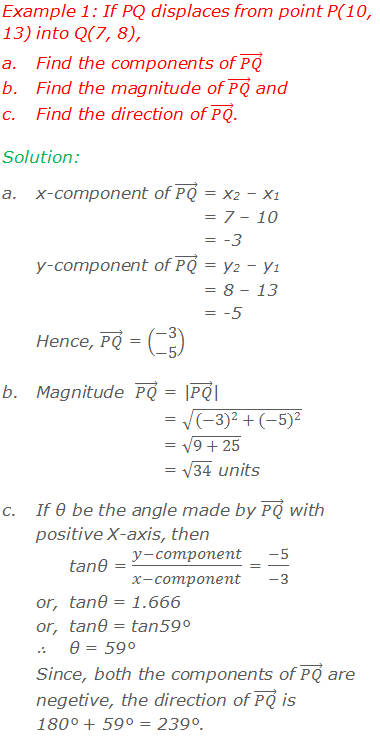
Magnitude of a Vector
The magnitude of a vector is the length of its directed line segment from the initial point to the terminal point. So, the magnitude of a vector is a positive number which is the measure of the line segment representing that vector. The magnitude of a vector is also known as the modulus or absolute value of the vector.
********************
10 Math Problems officially announces the release of Quick Math Solver and 10 Math Problems, Apps on Google Play Store for students around the world.
********************
********************

Direction of a Vector
Direction of a vector is the
direction of the line segment representing the vector. The direction of a
vector is measured as the angle made by the vector with positive (i.e
anticlockwise) direction of X-axis.

Therefore, for the
direction of a vector, we find the tangent of the angle (θ) made by the given
vector with the X-axis in a positive (anticlockwise) direction.



Worked Out Examples




0 comments: